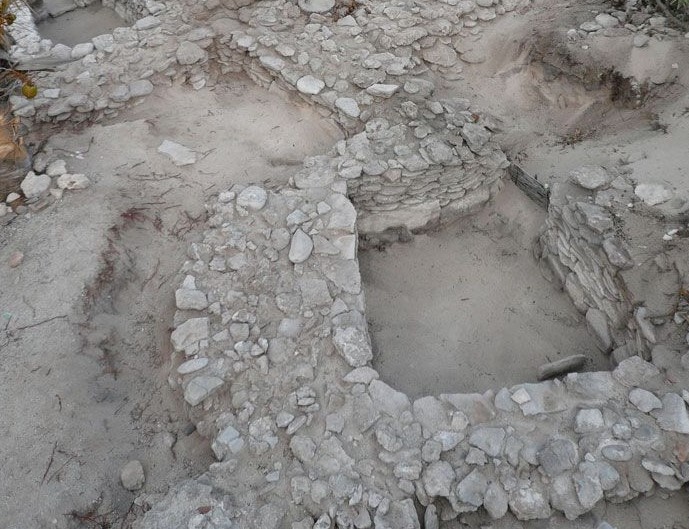This is the unbelievable story of the slaves of Tromelin Island. It was about 450 km east of Madagascar that the French East India Company’s frigate Utile, captained by Jean de La Fargue, ran aground on a small, flat island about 500km north of Réunion on the night of July 31, 1761.
There were 160 slaves aboard the ship, including men, women, and children. The slaves were bound for Mauritius where they would be sold to plantation owners. The colonial authorities did not authorize de Lafargue to trade in slaves, although slavery was legal at the time. There was also a 140-man French crew aboard the ship.
Maps were inaccurate, and the captain was stubborn, so the ship was forced onto the reef off the north end of the islet. Water began to flow into the ship after the impact shattered the hull. During the ship’s breakup, some slaves escaped, but most drowned in the cargo hold. Around 60 to 80 Malagasy slaves and 122 of the crew found themselves stranded on Île des Sables (Island of Sand) the next morning.
First officer Barthélémy Castellan du Vernet took over the ship after Captain Jean de Lafargue experienced some kind of nervous breakdown. In order to build separate camps for the crew and the slaves, he rallied the crew to salvage food, tools, and timber from the wreck. Construction of a new boat began after a well was dug 5 meters deep, and an oven and a furnace were built. The remnants of Utile were resurrected within two months. Therefore, 122 French sailors remained aboard Providence when they set sail for Madagascar on 27 September 1761. They promised the Malagasy slaves a ship would return.

Providence arrived in Madagascar four days after setting sail, and the crew was transferred back to Réunion Island and Mauritius. Tropical diseases killed many men during the transit. As a result, Castellan du Vernet was left to face the wrath of the Mauritius governor, who was furious at Castellan du Vernet for violating his prohibition against bringing slaves to the island.
The governor refused Du Vernet’s request to send a ship back to the islet. The castaway slaves even reached Paris and caused a brief stir, but there were bigger concerns to contend with, such as the Seven Years’ War and the French East India Company’s bankruptcy. Castellan du Vernet didn’t forget about the slaves.
The minister of marine affairs agreed to send a ship to Île des Sabers in 1772, eleven years after the slaves were stranded there, but it would take three more years for La Sauterelle to arrive. The stranded islanders were contacted by two men on a small boat that arrived on the island. However, the boat ran aground on the reef. The first man swam back to the ship, and the second man swam to the island.
A bad weather forecast and dangerous reefs prevented further attempts to land and the ship sailed back. La Sauterelle was followed by two other ships, but neither made landfall. Jacques Marie Boudin de la Nuguy de Tromelin, a corvette captain under the command of Jacques Marie Boudin de la Nuguy de Tromelin, landed on the island on 29 November 1776 and rescued the survivors. A boy of eight months and seven women were the last survivors.
When Tromelin-Lanuguy arrived at the site, he discovered that the survivors were wearing clothing made from plaited feathers obtained from sea birds they had killed. Additionally, the islanders ate fish, tortoises, and eggs from birds. Despite the fact that flint stones were most likely used, Tromelin-Lanuguy claimed the islanders somehow kept a fire going all these years. Their huts were made of coral blocks, one meter and a half thick, and had a communal oven to keep out the cyclones.
There is no written account of one of the greatest stories of human perseverance, as the testimony of the seven remaining women and records of La Dauphine were lost. A French naval officer and director of the Naval Archeology Research Group, Max Guérout, led an archaeological expedition to the island in 2006 to learn how the islanders survived 15 years on a tiny, wind-ravaged island.

Therefore, Guérout estimates that 60 to 80 slaves died within the first two years of landing on the island. On a makeshift raft, a group of 18 left the island shortly after they were abandoned, but whether they reached Madagascar is unknown. The population was reduced to 15 survivors within five years and remained so for the next decade. With three men and three women, the French sailor stranded on La Sauterelle had left the island months before the rescue on a raft with a sail of woven feathers. No one heard from them again.
During their search for copper utensils in the wreck, Guérout and his team discovered hammered copper utensils. What was even more amazing was how many times they had been repaired over the years-some up to eight times. Using copper bits from other objects, the castaways created patches, drilled holes through the patches and plates, and used rolled copper pieces as rivets, which they hammered into place.
Around 45 domestic objects were found during the excavation, including iron tripods for holding cooking vessels and lead bowls probably made from lead sheets kept on Utile for patching holes at sea. Among the items they discovered were rings, bracelets, pendants, and combs made of copper.
In spite of their conditions, one doesn’t get the impression that these people were crushed by them. Guérout described the castaway slaves as trying to make their way through life with order and method. In this story, we see people abandoning their instincts and survival because they were viewed as lesser humans by some of their fellow humans.”
As a result of a weather station being built there by French authorities in 1954, much of their settlement was destroyed. Consequently, two years later a cyclone destroyed the station, which was rebuilt. Several buildings, cisterns, and concrete footings remain in operation today. In addition to that, there is an airstrip measuring 1,200 feet that serves as the only connecting point with the outside world. Thus, as a tribute to Captain Tromelin de La Nuguy, who rescued the forgotten islanders in 1885, the island has been named Tromelin Island since then.
Read More – Oliver Cromwell – A Revolutionary Leader who Shaped Modern England







